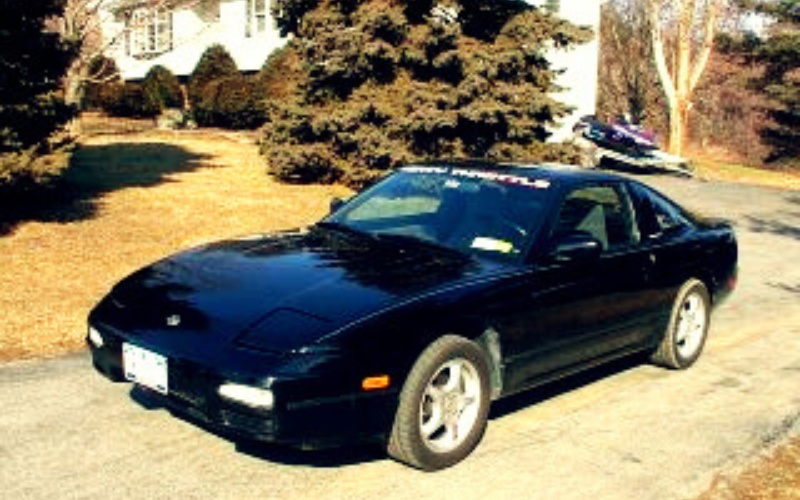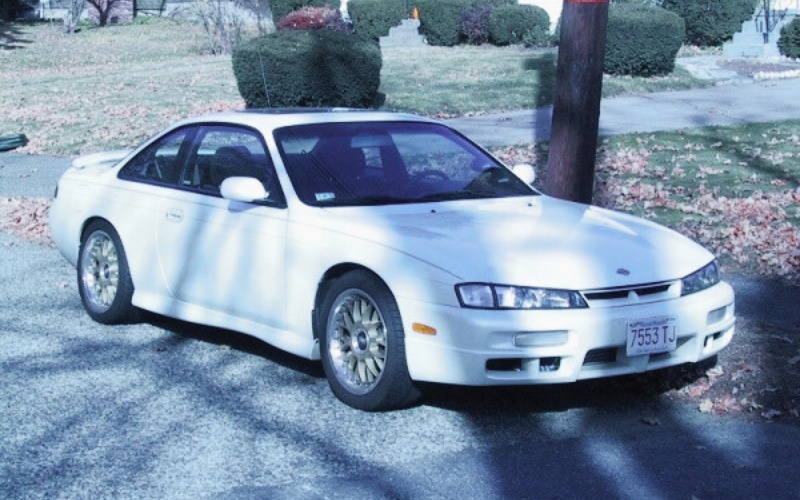If you’re a true gearhead, the name SR20DET likely ignites a spark of excitement in your automotive-loving soul. Renowned for its legendary performance and remarkable potential, the SR20DET engine has solidified its place in the hearts of car enthusiasts worldwide.
With a variety of iterations and modifications available, the burning question remains: Which SR20DET is truly the best? Today, we embark on a thrilling quest to uncover the ultimate powerhouse among the SR20DET lineup.
89-90 S13 240SX – SOHC KA24D
A reasonable price range for a project car in good condition is $1500-$2200.

There are three issues with this chassis when considering it for the SR20DET swap.
The first is a minor one. The power steering reservoir is located on the US passenger side. The SR20DET has the PS pump on the US driver’s side. All that needs to be done is to switch to the DOHC car PS reservoir and PS lines, which can be found new or at a junkyard.
Second, the tachometer in the car is calibrated for the SOHC engine and will not work with the SR20DET. Replacement can be found in the DOHC car or in the JDM SR20DET car. The tachometer can be replaced independently from the entire gauge cluster.
Third is a problem worth thinking about before jumping into the swap. The A/C compressor from the SOHC engine will not bolt up to the SR20DET A/C bracket without a custom adapter. This means that an SR20DET compressor is usually used, which requires the car A/C lines to be modified and the system recharged.
91-94 S13 240SX – DOHC KA24DE
The reasonable price range for a project car in good condition is $2000-$3200.

These cars are perfect candidates for the swap. All engine accessories, the tachometer, and the A/C system are in the right spot and will interchange with the SR20DET without a problem. Pick these years if finances permit.
Other than the above issues, any SR20DET S13 / S14 / S15 engine will bolt with no structural modifications.
95-98 S14 240SX – DOHC KA24DE
The reasonable price range for a project car in good condition, is $3500-$8000.

Great swap candidates as well. No issues with Power Steering, A/C, or any other aspect of the car. Obviously, these cars are newer and more expensive. Being a new generation, the wiring and engine controls are a bit more complicated.
Front Wheel Drive 2.0 liter Sentra – 200SX – NX2000
Excellent swap cars, AWD Bluebird or GTi-R engine, bolts right onto existing SE-R transmission. Using a JWT-tuned ECU and the US engine harness, the swap can make these cars run very fast, low 13’s stock.
Altima – 1.6L Sentra – 2.4L Pickup
Install into a KA24DE-powered early 90’s Hardbody pickup truck is fairly simple. The firewall has to be dented in to allow the engine to sit back far enough, but other than that, there are no major mods needed. 1.6 liter Sentra’s, Alitma’s, Stanza’s, and other front wheel drive cars will require lots of modification to accept the SR20DET engine in any form.
S15: The Final Form
Saving the best for last, we present the crème de la crème: the SR20DET S15. Hailed as the ultimate expression of SR20DET perfection, the S15 embodies precision engineering and unrivaled performance.
This marvel of an engine offers an increased power output, a stronger block, and an enhanced turbo system compared to its predecessors. With its seamless power delivery and razor-sharp response, the SR20DET S15 is the embodiment of automotive ecstasy. When you crave the pinnacle of SR20DET performance, this is the engine that will set your heart ablaze.
SR20DET Comparison: S13 vs. S14 vs. S15
| Features | S13 | S14 | S15 |
|---|---|---|---|
| Power Output | 200-205 HP | 220-225 HP | 250-260 HP |
| Turbocharger | T25 Turbo | T28 Turbo | T28 Turbo |
| Block Strength | Solid, but may require reinforcement for high horsepower applications | Stronger block design for improved durability | Enhanced block design for increased strength |
| Engine Management System | Early-generation ECU | Improved ECU with better tuning capabilities | Advanced ECU with precise control and tuning features |
| Cooling System | Adequate, but may benefit from aftermarket upgrades for high-performance applications | Improved cooling system for better heat dissipation | Enhanced cooling system for efficient temperature management |
| Aftermarket Support | Extensive aftermarket support with a wide range of available upgrades | Broad aftermarket support, offering a variety of performance-enhancing options | Rich aftermarket support with a plethora of high-quality upgrades available |
| Driving Experience | Agile and responsive, ideal for spirited driving | Refined and balanced, suitable for both street and track use | Exhilarating power delivery with razor-sharp throttle response |
Now that we’ve explored the SR20DET trinity, it’s time to take things to the next level. The beauty of the SR20DET lies not only in its factory performance but also in its remarkable potential for aftermarket upgrades.
From turbo upgrades and fuel system enhancements to forged internals and advanced engine management systems, the sky’s the limit when it comes to unlocking the true power of your SR20DET. With a vast array of aftermarket options at your disposal, you can sculpt your SR20DET into a fire-breathing beast that defies convention.
As we conclude our thrilling quest to discover the ultimate SR20DET, we find ourselves faced with a daunting decision. Each iteration has its unique strengths and appeals to different automotive enthusiasts.
The SR20DET S13, with its trailblazing legacy, the refined performance of the S14, and the unparalleled mastery of the S15, offer enthusiasts a range of choices to suit their driving preferences. Remember, the best SR20DET is ultimately the one that fuels your passion and delivers the exhilaration you crave.
